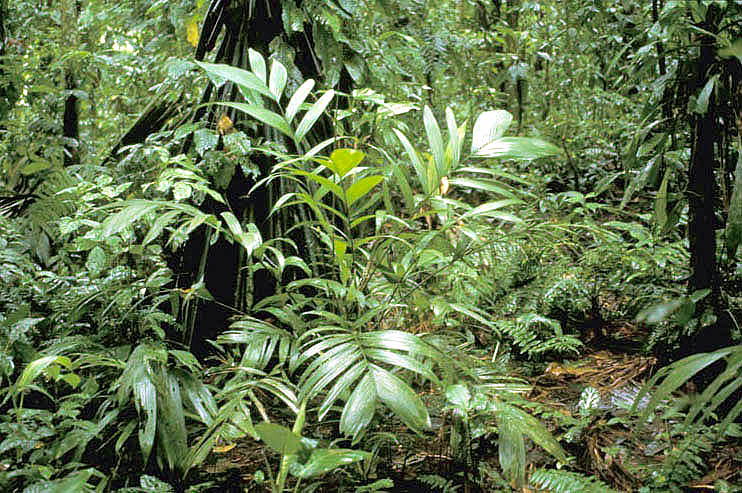Bactris schultesii
(L.H.Bailey) Glassman
Original
reference:
Rhodora 65: 259 (1963)
Basionym:
Yuyba schultesii L.H.Bailey
Morphology:
Understorey palm. Stems solitary or clustered, 1-3 m tall, thin, 0.5-1.5 cm in diameter, unarmed. Leaf blade simple, bifid, 30-65 cm long, and 15-35 cm wide, without spines except for minute bristles along the margin; rachis 20-40 cm long. Inflorescences 5-13 cm long; branches 3-7 branches, to 5 cm long. Peduncular bract glabrous. Female flowers scattered along the branches, with a tubular calyx enclosing the corolla. Fruit red, globose, ca. 1 cm in diameter, smooth; fruiting perianth with a 3-lobed calyx as long as the 3-lobed corolla; staminodial ring absent.
Distribution:
S Colombia and Ecuador E of the Andes, on terra firme.
Notes:
Sometimes included in Bactris simplicifrons (Henderson, 1995; Henderson et al., 1995), but different from that species in its usually simple leaf blade, with the veins forming a narrower angle with the rachis, and in its branched inflorescence.
Conservation
status: Lower risk/least concern
(Borchsenius & Skov 1999)
Common
names:
Chonta duro de tintin
–
Spanish
(H. Balslev #62052).
Hua-so-e-ne
–
Siona
(H. Balslev #62052).
Su-te-ëne
–
Siona
(H. Balslev #69044).
Wa-tso-uné
–
Siona
(H. Balslev #4785).
Uses:
Pigeons (Geotrygon montana) eat the fruits
(H. Balslev #69044).
The stem is scraped to make “stuffing” for gun cartridges
(H. Balslev #62052).
|
Latest posts by admin (see all)
- Aluminium Rattan Garden Furniture Design Ideas - September 11, 2019
- Popular Gardens and Parks in Sheffield, United Kingdom - September 18, 2018
- How New Eco-Friendly Garden Benches Help Plants and Consumers in the UK - February 26, 2018




Discussion: